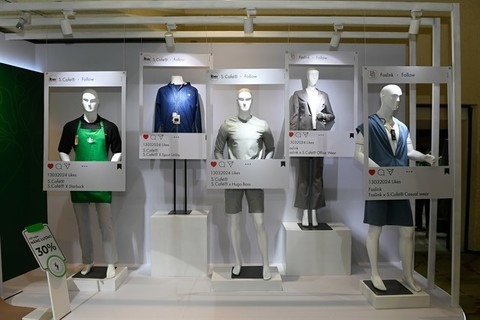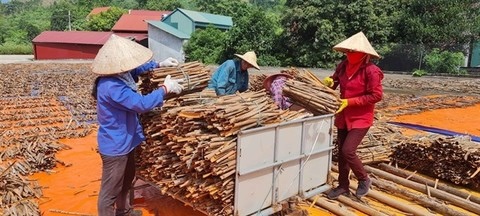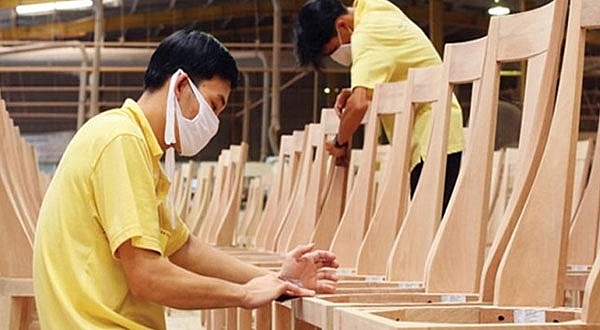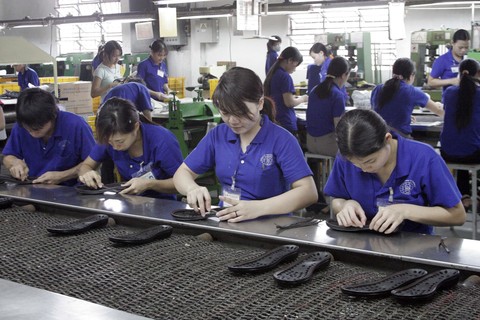VN footwear boasts strong development prospects
VN footwear boasts strong development prospects
Viet Nam’s leather and footwear industry will continue to develop in the coming years, according to the Viet Nam Leather, Footwear and Handbag Association (Lefaso).
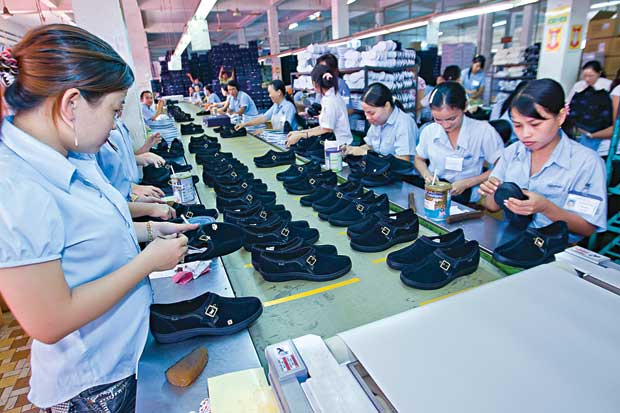
Speaking at the two-day Viet Nam Footwear Summit which opened in HCM City on Wednesday, Diep Thanh Kiet, Lefaso’s deputy chairman, said exports of footwear and bags increased to US$18.1 billion last year from $16.2 billion in 2016.
There are opportunities for the industry to continue developing, he said.
Viet Nam has free trade agreements with most major markets like Japan, the Customs Union of Russia, Kazakhstan and Belarus, South Korea, and ASEAN in addition to the Comprehensive and Progressive Agreement for Trans-Pacific Partnership and an agreement with the EU, he said.
“We have a golden demographic ratio with 66.9 per cent of the population being of working age, providing an abundant supply of cheap and skilled workers.
“Viet Nam can supply materials for the footwear industry and becomes a destination for large producers.”
The country has succeeded in producing and exporting high-value products, he said.
“This is a big opportunity for the industry. If we continue to promote the export of high-value products, the industry will develop strongly.”
Replying to a question on the impact of the US’s withdrawal from the TPP on the footwear industry, he said this would not affect Viet Nam’s footwear exports to the US much.
Matt Priest, president and CEO of the Footwear Distributors and Retailers of America, said the US imported 2.39 billion pairs of footwear last year.
“Per capita spending on footwear climbed to a record last year,” he said.
China was the biggest exporter to the market, but China’s share is declining and Viet Nam’s is increasing, he added.
Talking about the EU-Viet Nam FTA, Nguyen Thi Xuan Thuy, a researcher at the Viet Nam Institute of Industrial and Trade Policy and Strategy, said all tariff lines on leather, cases and bags and 37 per cent of tariffs on footwear would be removed immediately when the FTA comes into effect.
To enjoy tariff incentives, the products must meet rules of origin and technical barriers to trade commitments with regard to labelling, conformity assessment, and market surveillance, increasing compliance costs, she said.
Challenges
Kiet also spoke about the challenges faced by the industry such as increasing labour costs, automation, protectionism, and competition from other countries.
Pointing out that between 2010 to 2017 the minimum wage increased 3.02 times while GDP per capita only increased by 2.04 times, he said: “If we had not improved productivity, labour costs will be high.
“Large customers tend to shift orders to countries with cheaper labour costs, especially for simple and manual items. This initially will not have a great impact on Vietnamese footwear, but in the long term, if we do not adjust our strategy, we will lose orders to Cambodia, Myanmar, Bangladesh, and Ethiopia.”
The application of automation and Industry 4.0 technologies will help raise productivity. But more than 75 per cent of footwear enterprises are small firms, and it is difficult for them to afford automation.
Duncan Scott of New Balance Athletic Shoe, Inc, said countries moving up the value chain could stop making footwear and those continuing to make footwear would need “sophistication”.
Low cost labour alone would not ensure success, and firms need to continue to drive lean efficiency and digital connectivity among others, he said.
Delegates said proper use of automation could eliminate redundant workers and make factories much more efficient and profitable.
The industry’s development plans target rapid, sustainable development and better use of the country’s FTAs to expand exports.
It plans to restructure production to add value to products, increase local content, improve designs, and focus on medium- and high-quality products for the domestic and export markets.
John Graebin from US footwear company Deckers Brands said: “More and more automation solutions will be used. I think that is a real opportunity for Viet Nam so that the country can compete in a few more decades.”
There are 939 enterprises in the footwear industry in Viet Nam, which is the third largest producer and second largest exporter in the world.
The US was the largest importer of Vietnamese footwear and bags (accounting for 35.9 per cent), followed by the EU (30.6 per cent), China (6.4 per cent), Japan (6.3 per cent), and South Korea (2.8 per cent).


